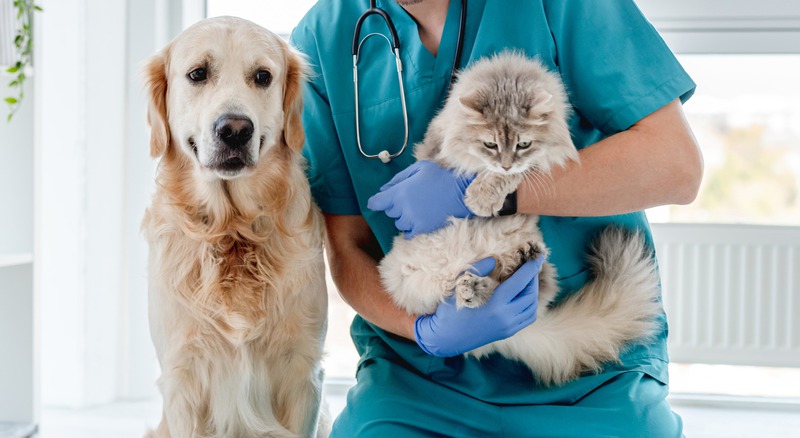When our furry friends start acting out of the ordinary, it can be worrisome. They can’t tell us what’s wrong, but their behavior often indicates that something isn’t right. That’s when we look to veterinarians, especially vet surgeons, to solve these internal mysteries. Our pets mean the world to us, and ensuring they receive the best medical attention is our top priority. So let’s peel back the curtain on how vet surgeons work their magic to fix pet internal problems, ensuring our four-legged pals stay healthy and happy.
The Diagnostic Phase
Before a veterinarian can fix internal problems, they need to understand what they’re dealing with. This begins with a thorough examination. Your vet will check your pet from nose to tail, often including blood work or imaging to get a clearer picture of what’s going on inside. At this stage, a vet laboratory plays a pivotal role. It’s where samples are analyzed, and issues such as organ dysfunction, infections, or hormonal imbalances are brought to light.
Types of Diagnostic Tools
-
Ultrasound: This technology uses sound waves to create images of the inside of the body, helping to spot abnormalities.
-
X-rays: These are especially helpful for examining bones and certain organs.
-
MRI: Magnetic resonance imaging provides detailed images and is particularly useful for neurological issues.
-
Endoscopy: By using a flexible tube with a camera, vets can look inside areas like the gastrointestinal tract.
When Surgery Is Necessary
Based on the diagnostics, the vet may decide that surgery is the best course of action. They’ll walk you through the process, from risks to recovery. When surgery is the chosen path, you can trust that your pet is in skilled hands. Vets are trained to perform various types of dog surgery and other animal surgeries, which range from standard spaying and neutering to more complex procedures like removing tumors or repairing broken bones.
Common Internal Surgeries for Pets
-
Bladder Stone Removal: Like humans, pets can develop painful stones in their bladder that often need surgical removal.
-
Gastric Torsion (Bloat) Correction: This is a life-threatening condition where the stomach twists on itself, requiring immediate surgery.
-
Foreign Body Removal: Sometimes, pets swallow things they shouldn’t. If they can’t pass them naturally, surgery is necessary to remove the item.
-
Organ Repair: Damaged organs like the liver or kidneys may need surgical intervention for your pet to recover fully.
The Role of Vet Surgeons and Anesthesiologists
Vet surgeons and anesthesiologists play pivotal roles in the care and treatment of animals undergoing surgical procedures. Together, they provide a combination of expertise crucial for your pet’s well-being. Below are key highlights of their roles:
-
Vet Surgeons:
-
Specialize in various surgical procedures, from routine spaying and neutering to complex orthopedic surgeries.
-
Focus on precision and care to minimize tissue damage and pain.
-
Ensure smooth post-operative recovery with pain management and follow-up care.
-
Anesthesiologists:
-
Administer anesthesia tailored to each pet’s needs, considering factors like age, weight, and health status.
-
Continuously monitor your pet’s vital signs, including heart rate, blood pressure, and oxygen saturation, to ensure safety.
-
Manage any complications that may arise from anesthesia during the surgical procedure.
The collaboration between vet surgeons and anesthesiologists is essential for the safety and comfort of pets undergoing surgery, making them integral members of the veterinary care team.
Post-Surgery: The Road to Recovery
Once the surgery is done, the recovery phase begins. Your pet will likely stay at the clinic for a while, where they can be monitored and given pain relief as necessary. You’ll be provided with instructions for home care that might include medication administration, wound care, and limited activity. Follow-up visits are crucial, allowing the vet to track your pet’s healing process and adjust their treatment plan.
Tips for Home Care After Surgery
-
Keep your pet comfortable and quiet to allow for healing.
-
Prevent them from licking or chewing at stitches or bandages.
-
Ensure they follow any dietary restrictions or changes recommended by your vet.
-
Stick to any prescribed pain relief or antibiotics schedule.
Services a Veterinary Internist Can Offer
If your pet has ongoing internal health issues or needs specialized care, a veterinary internist in Turlock or similar regions could be your next step. These vets focus on diagnosing and treating illnesses of the internal organ systems. They often work on complex cases, including managing chronic diseases, and are your ally in keeping your pet’s insides running smoothly.
Internal Medicine Specialties
-
Cardiology – related to the heart
-
Gastroenterology – dealing with the digestive system
-
Nephrology – focused on kidney health
-
Endocrinology – dealing with hormonal issues
Final Thoughts
As we break things down, it’s clear that fixing pet internal problems is a multifaceted process. From that initial appointment to complex surgeries and post-operative care, it’s a journey of science, skill, and genuine care for animals. Vet surgeons and their teams are like unsung heroes for our pets, working behind the scenes to ensure they live their best lives. Understanding this process keeps us informed as pet owners and aids us in making the best decisions for their health and well-being. So, rest assured that when the need arises, your pet is in capable hands, ready to be patched up and sent home, tail wagging and all.





